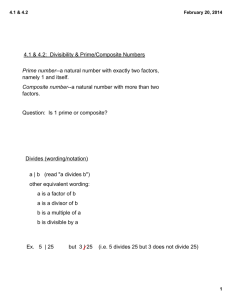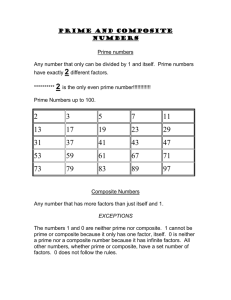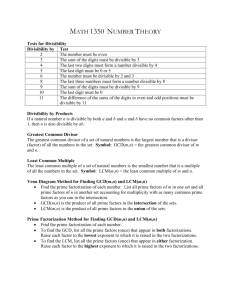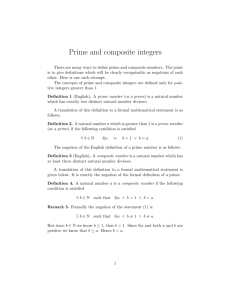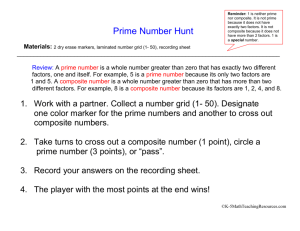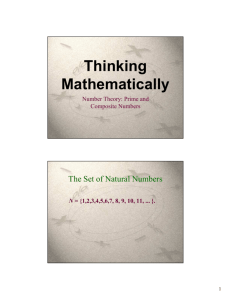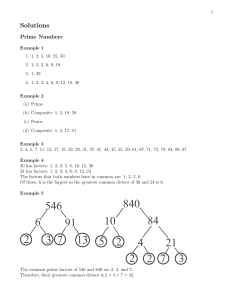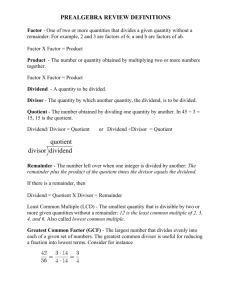Ch 5.1
advertisement
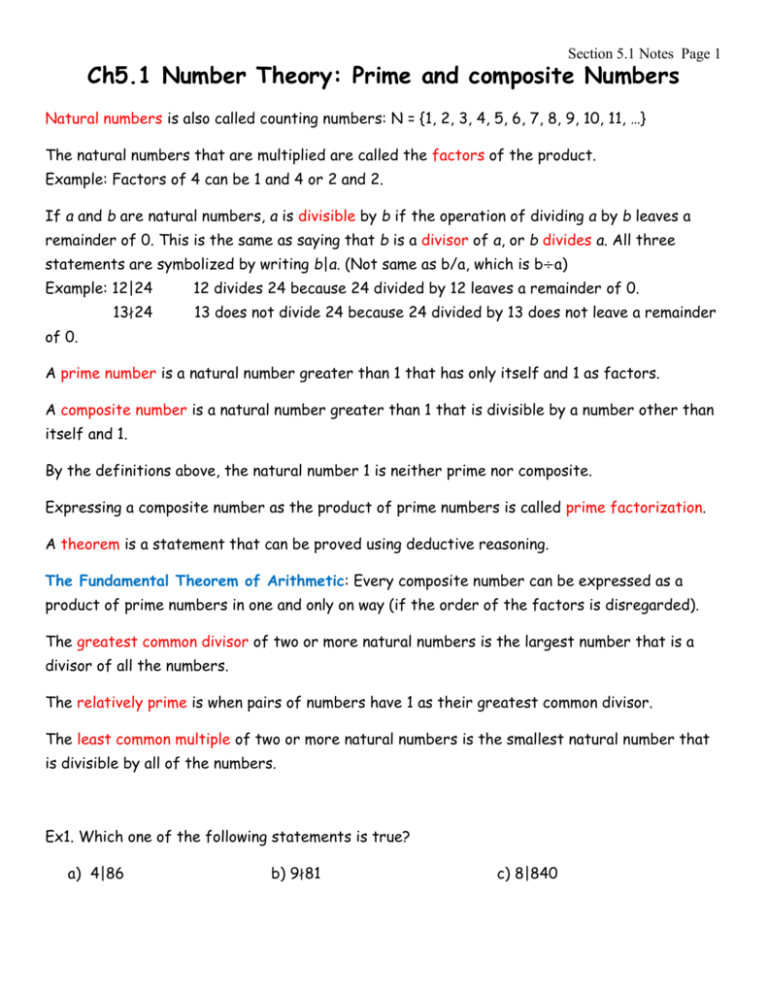
Section 5.1 Notes Page 1
Ch5.1 Number Theory: Prime and composite Numbers
Natural numbers is also called counting numbers: N = {1, 2, 3, 4, 5, 6, 7, 8, 9, 10, 11, …}
The natural numbers that are multiplied are called the factors of the product.
Example: Factors of 4 can be 1 and 4 or 2 and 2.
If a and b are natural numbers, a is divisible by b if the operation of dividing a by b leaves a
remainder of 0. This is the same as saying that b is a divisor of a, or b divides a. All three
statements are symbolized by writing b|a. (Not same as b/a, which is b÷a)
Example: 12|24
13∤24
12 divides 24 because 24 divided by 12 leaves a remainder of 0.
13 does not divide 24 because 24 divided by 13 does not leave a remainder
of 0.
A prime number is a natural number greater than 1 that has only itself and 1 as factors.
A composite number is a natural number greater than 1 that is divisible by a number other than
itself and 1.
By the definitions above, the natural number 1 is neither prime nor composite.
Expressing a composite number as the product of prime numbers is called prime factorization.
A theorem is a statement that can be proved using deductive reasoning.
The Fundamental Theorem of Arithmetic: Every composite number can be expressed as a
product of prime numbers in one and only on way (if the order of the factors is disregarded).
The greatest common divisor of two or more natural numbers is the largest number that is a
divisor of all the numbers.
The relatively prime is when pairs of numbers have 1 as their greatest common divisor.
The least common multiple of two or more natural numbers is the smallest natural number that
is divisible by all of the numbers.
Ex1. Which one of the following statements is true?
a) 4|86
b) 9∤81
c) 8|840
Section 5.1 Notes Page 2
Ex2. Find the prime factorization of the number.
a) 45
b)48
c) 120
d) 700
Ex3. Find the greatest common divisor of the numbers
a) 25 and 70
b) 16 and 42
c) 66 and 90
d) 216 and 234
Ex4. Find the least common multiple of the numbers.
a) 25 and 70
b) 72 and 120
c) 144 and 300
d) 18 and30
Ex5. You need to divide 40 men and 24 women into all-male and all-female teams so that each
team has the same number of people. What is the largest number of people that can be placed
on a team?
Ex6. A movie theater runs its films continuously. One movie runs for 80 minutes and a second
runs of 120 minutes. Both movies begin at 4:00 P.M. When will the movies begin again at the
same time?
